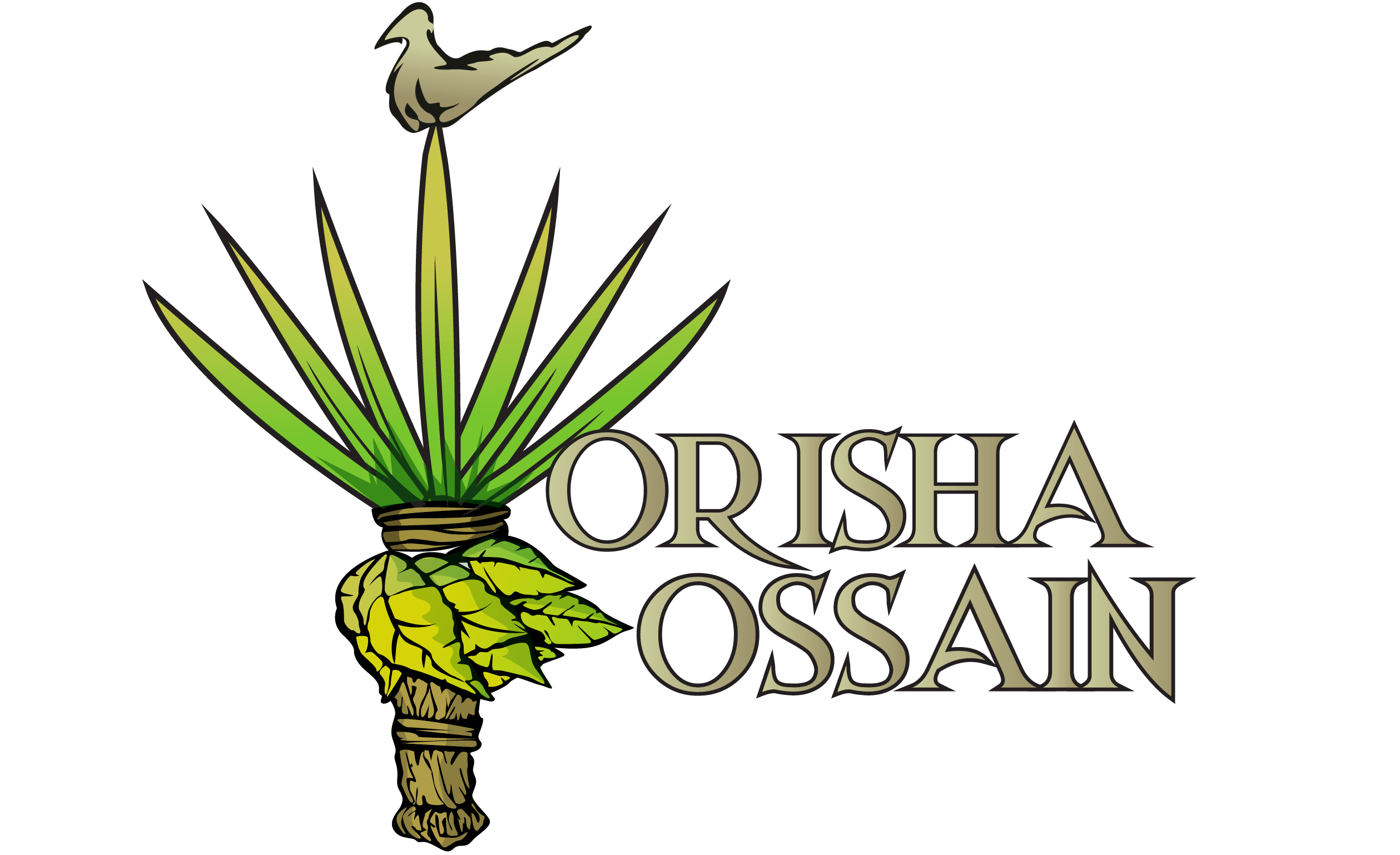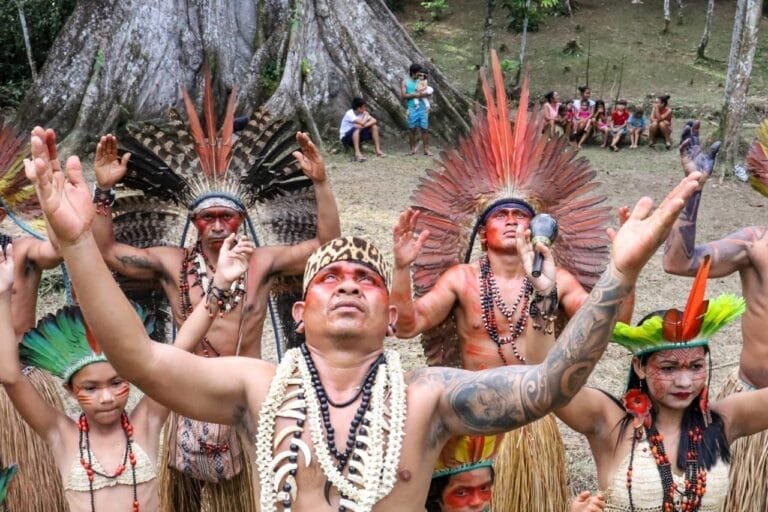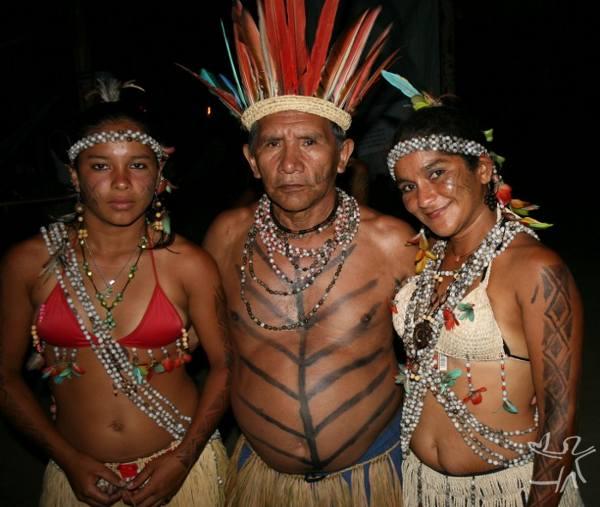The Shanenawa
The Shanenawa language, part of the Panoan family, is spoken mainly by the elders. Although it was banned during their time working in rubber plantations, the Shanenawa people have never forgotten it. Today, while young people primarily speak Portuguese, there are ongoing efforts to preserve the Shanenawa language. Schools in the community serve as spaces for learning the language, in contrast to urban schools that often disregard indigenous languages and ways of life.

Meaning of the Name
The name Shanenawa is derived from the words Shane (a species of bluebird) and Nawa (foreigner), meaning “blue bird people.” The bird is considered rare and is viewed as a sign of conflict or war among indigenous groups.
This translation captures the cultural and historical context of the Shanenawa tribe, as well as their current efforts to preserve their language and reclaim their land rights.
” We are the people Shanenawa which means ‘people of the bluebird’. It’s a beautiful bird that flourished and is now endangered. It is for his rarity that we are also rare; That’s why there is only one Shanenawa tribe in Acre and there isn’t another one in another place in Brazil.”
Shanenawa Caiçuma Festival
The Shanenawa Indigenous people from Morada Nova village, located along the Envira River in Feijó, have been hosting the Caiçuma Festival for several years now. This event was attended by indigenous people from various ethnic groups, as well as the local population, who were also invited to participate.
The Funai (National Indian Foundation) representative in Feijó, Carlos Brandão, stated that the event is significant for the city and is part of the local cultural calendar.
Caiçuma: A Traditional Indigenous Drink
Caiçuma is a traditional fermented drink made from manioc, which can also be prepared with bananas. This drink is an integral part of Indigenous tradition and culture, and it is always present at rituals festivals, and important ceremonies.
One of its unique effects is its role in purging or cleansing the body. It can sometimes induce vomiting, which is considered a part of the detoxifying process, helping to purify both the body and spirit. This purging is not seen negatively but rather as a means of achieving spiritual clarity and physical well-being, aligning with many indigenous beliefs that emphasize the interconnection between bodily health and spiritual balance.

The Importance of Indigenous Culture
Dindim Pinheiro, the mayor of Feijó, emphasized the importance of the event for both Indigenous and Feijoense culture: “Indigenous culture has a strong influence on our gastronomy, handicrafts, traditions, values, and legends. We must also remember the contributions made by the unforgettable Inácio Shanenawa and the centenarian Bruno Brandão Shanenawa to benefit the Indigenous population of this land.
History of the Shanenawa Tribe People

The history of the Shanenawa people is similar to that of many indigenous populations in Acre. In the early 20th century, they were victims of the rapid and violent occupation of their region due to the extraction of rubber and caucho.
As the regional economy developed, the Shanenawa were initially used as labor to provide meat and other food to workers in the rubber plantations. Later, they were integrated into the rubber extraction industry itself and tasked with “taming” the “wild” indigenous people from the upper Envira River.
After several displacements, the Shanenawa settled on a piece of land later officially recognized under the name Katukina/Kaxinawa. This was due to a misunderstanding, as they were mistaken for the Katukina people and referred to as such.
Fearing that they might lose their rights to the land, given the history of violence and injustice they had suffered, the Shanenawa chose not to correct the misunderstanding. Linguistic studies conducted in the 1990s confirmed this situation, as the Shanenawa language belongs to the Panoan family, not the Katukina family.








